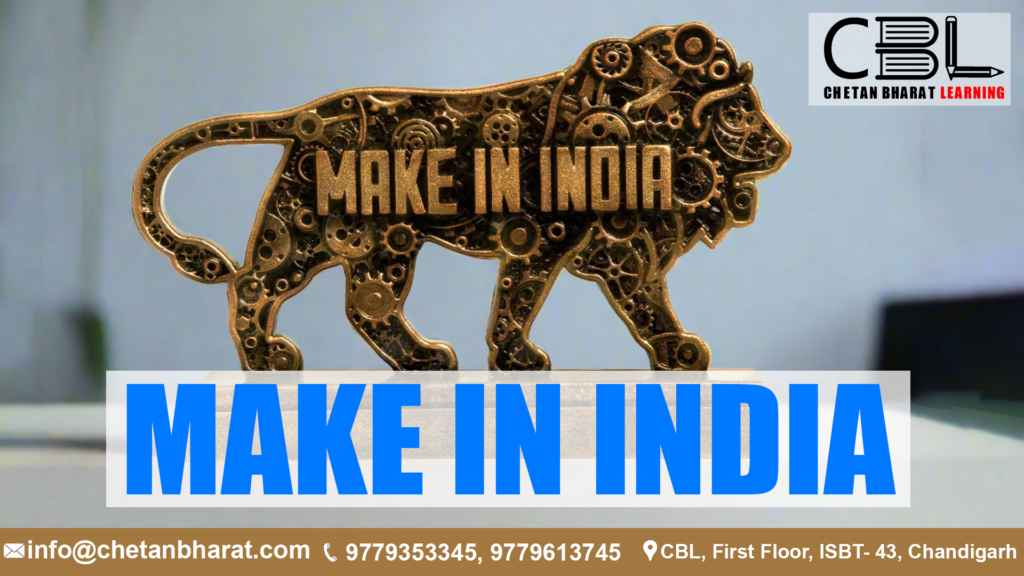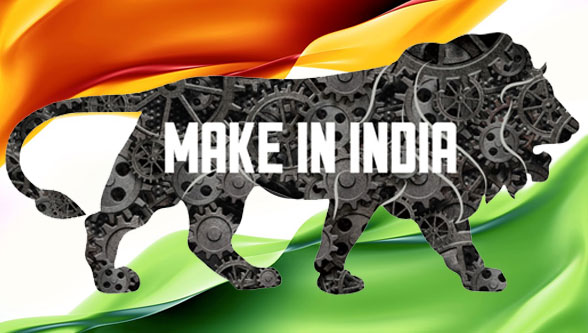
Important for UPSC, State PCS
Prelims: make in India . FDI . Investment . global manufacturing hub .
Mains: General Studies Paper 3 . Economy
Why in the news ?
- On September 25, 2014, the “Make in India” initiative completed 10 years as a pivotal step in India’s nation-building efforts. Launched to transform India into a global manufacturing hub.
Make in India
New Mindset: The government embraced a role as a facilitator rather than a regulator.
Launched in 2014 under Prime Minister Narendra Modi’s leadership.
Aim:
To facilitate investment, foster innovation, enhance skill development, protect intellectual property & build best in class manufacturing infrastructure.
To transform India into a global hub for design and manufacturing.
Vocal for Local:
Seen as an important ‘Vocal for Local’ initiative, its objective is to
To boost India’s manufacturing capabilities and
To showcase its industrial potential globally
Four Pillars of “Make in India” initiative:
New Processes: To enhance the business environment, promote entrepreneurship and startups – ‘ease of doing business’ became a crucial factor.
New Infrastructure: Development of industrial corridors, smart cities, integrating state-of-the-art technology and high-speed communication to create world-class infrastructure, improving intellectual property rights (IPR) infrastructure etc.
New Sectors: Opening of Foreign Direct Investment (FDI) in sectors like Defence Production, Insurance, Medical Devices, Construction, and Railway infrastructure.

10 YEARS OF
Impact of Initiative
Foreign Direct Investment (FDI): Attracted FDI inflow of $667.4 billion (2014-24), an increase of 119% over the preceding decade (2004-14).
Employment: Employment in the manufacturing sector increased from 57 million in 2017-18 to 64.4 million in 2022-23.
Exports: India’s merchandise exports surpassed $437 billion in FY 2023-24.
Ease of Doing Business: Sharp rise from 142nd rank in 2014 to 63rd rank in 2019 in the World Bank’s Doing Business Report.
Sector-wise Success:
Transportation: E.g. Vande Bharat Express Train
Defence Manufacturing: E.g. INS Vikrant, the country’s first domestically made aircraft carrier
Electronics: Samsung started the World’s Largest Mobile Factory in Noida
Production linked Incentive (PLI) Schemes
– The Schemes were introduced to enhance the country’s manufacturing capabilities and boost exports with an outlay of ₹1.97 lakh crore.
– It covers 14 key sectors aimed at fostering investment in cutting-edge technology and promoting global competitiveness.
PM GatiShakti
– Launched in 2021, PM GatiShakti is a strategic initiative aimed at achieving Aatmanirbhar Bharat and a US $5 trillion economy by 2025 through the creation of multimodal and last-mile connectivity infrastructure.
– It is driven by 7 engines, namely: Railways, Roads, Ports, Waterways, Airports, Mass Transport, Logistics Infrastructure.
Semiconductor Ecosystem Development
– The Semicon India programme was approved in 2021, encompasses four key schemes:
1. Modified Scheme for Setting Up Semiconductor Fabs in India
2. Modified Scheme for Setting Up Display Fabs in India
3. Modified Scheme for Setting Up Compound Semiconductors, Silicon Photonics, Sensors Fabs, and Discrete Semiconductors, along with Semiconductor Assembly, Testing, Marking, and Packaging (ATMP) / OSAT Facilities in India
4. Design Linked Incentive (DLI) Scheme.
National Logistics Policy (NLP)
– Launched in 2022, the Policy targets reducing logistics costs, improving India’s Logistics Performance Index ranking to among the top 25 countries by 2030, and developing a data-driven decision support system. Industrialization and UrbanizationThe National Industrial Corridor Development Programme is India’s most ambitious infrastructure initiative, aiming to create “Smart Cities” and advanced industrial hubs.
Startup India
– Launched 2016, the Initiative aimed at supporting entrepreneurs, and building a robust startup ecosystem.
– India boasts the third-largest startup ecosystem in the world, with 148,931 DPIIT Recognized Startups, which have created over 15.5 lakh direct jobs.
Key Reforms taken to facilitate implementation of Make in India
Other: One-District-One-Product (ODOP), Industrial Corridors, etc.
Semiconductor Ecosystem Development: E.g. Semicon India Program
National Single Window System (NSWS):Platform streamlines investor clearances for quicker approvals.
PM Gatishakti: GIS-based platform improves infrastructure planning and reduces logistics costs.
National Logistics Policy (NLP), 2022: Aims to lower logistics costs and enhance efficiency.
CBL Practice Questions for Prelims
Which of the following sectors is NOT a focus area under the “Make in India” initiative?
A) Aerospace
B) Biotechnology
C) Textile
D) Oil and Gas
Answer: D) Oil and Gas
CBL Mains Practice Question
Discuss the potential of the “Make in India” initiative in boosting India’s exports. What strategies can be adopted to enhance the competitiveness of Indian manufactured goods in global markets?




Leave a Reply
You must be logged in to post a comment.